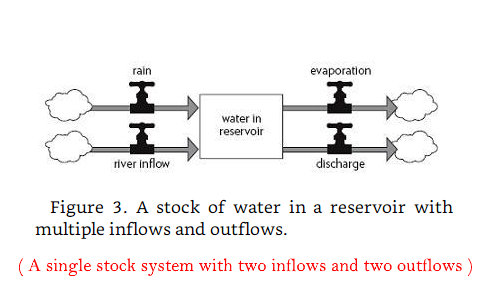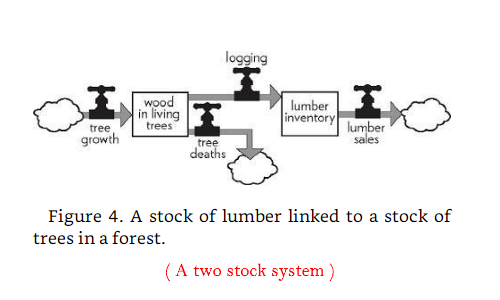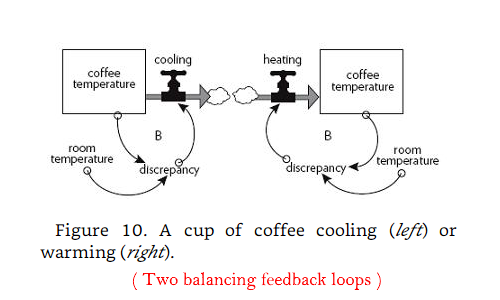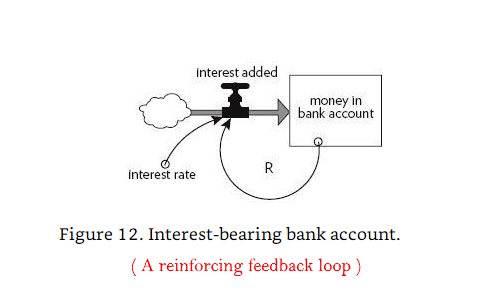Day 3 (15m)
Modeling Systems
We model a system to help us understand why it behaves the way it does.
The below clip shows an example of modeling part of the water system in a house as a "Stock-and-Flow" diagram. As you listen, think about how you could use the same method to model the system you identified yesterday that is causing you problems.
Stock-and-Flow Diagrams
Stock-and-Flow diagrams represent systems as collections of stocks, inflows, outflows, and feedback loops.
-
Stocks: Anything that "remembers" or "stores" a quantity of something. It can be as simple as the battery in your smartphone or as abstract as your level of patience.
-
Inflows: Anything that adds to the stock, the rate or speed of the inflow often varies. Charging your smartphone is an inflow to the battery stock. Taking a nap could be an inflow to your patience.
-
Outflows: Anything that takes away from a stock (the rate can also vary). Turning on your smartphone's screen and constantly searching for WiFi are outflows to the battery stock. Negative events that cause frustration are outflows to your patience.
-
Feedback Loops: Any part of the system that responds to changes in the level of a stock by adjusting inflows or outflows.
-
A balancing feedback loop attempts to conserve or return a stock to some ideal level. Your smartphone going into "battery saving mode" by dimming the screen and reducing background downloads tries to conserve the stock when it is running low. If becoming impatient causes you to take deep breaths and become calm, you are experiencing a balancing feedback loop.
-
On the other hand, a reinforcing feedback loop causes a stock to empty of overflow. The more times you recharge your phone, the less charge it can hold ... which leads you to charge your phone more often ... accelerating the demise of your battery. If the less patience you have the more likely it is for something to annoy you, and if annoyances make you lose your patience ... you're going to quickly become angry.
-
Here are a few examples of stock and flow diagrams from Thinking in Systems: A Primer. (The "clouds" you see just represent anything outside the scope of the system you are modeling):




Take a piece of paper out and do your best to model the system you identified yesterday as a stock-and-flow diagram. Don't focus on the problem, but instead just try to illustrate how the system behaves. Then answer the questions about your system.
What are the stock(s) in your system?
What are the inflow(s) and outflow(s) in your system?
What are the feedback loop(s) in your system and what type of loop are they?